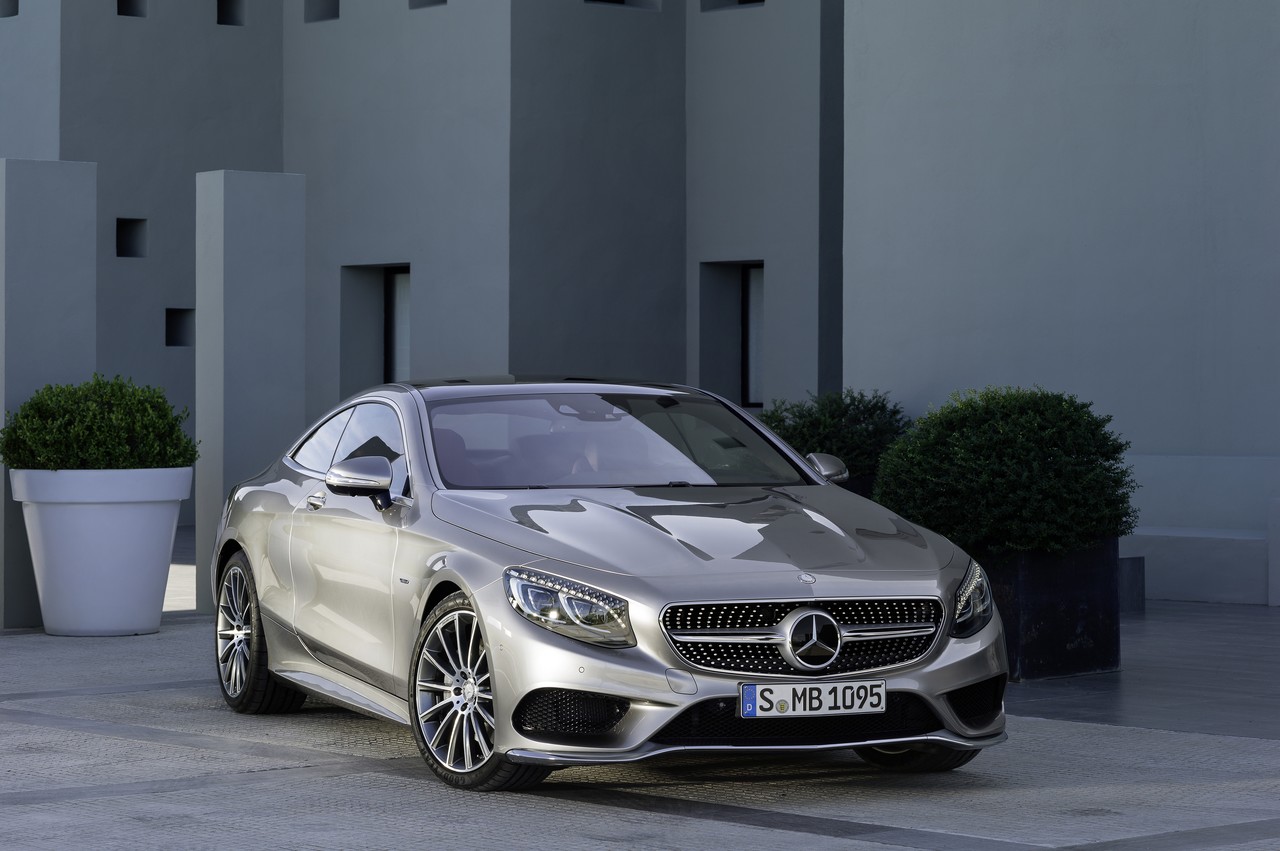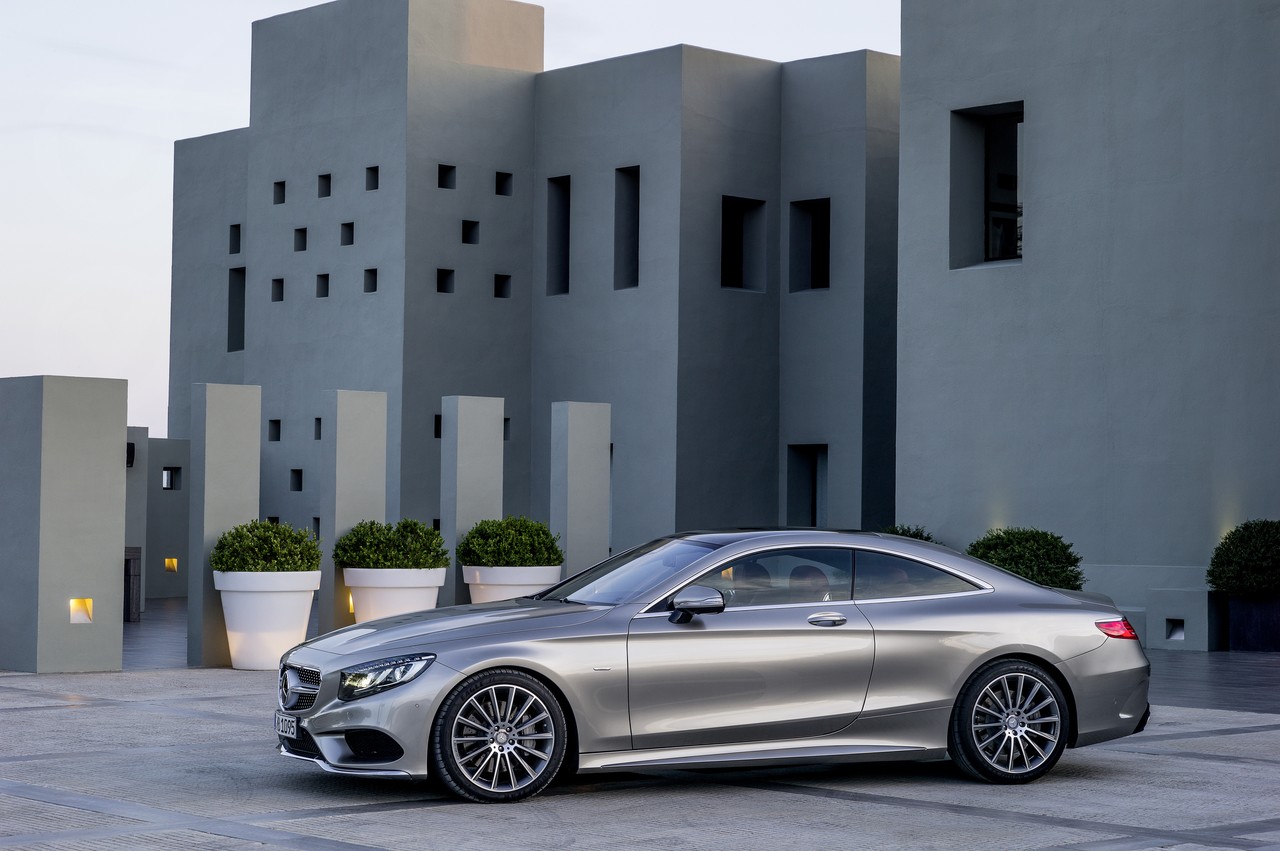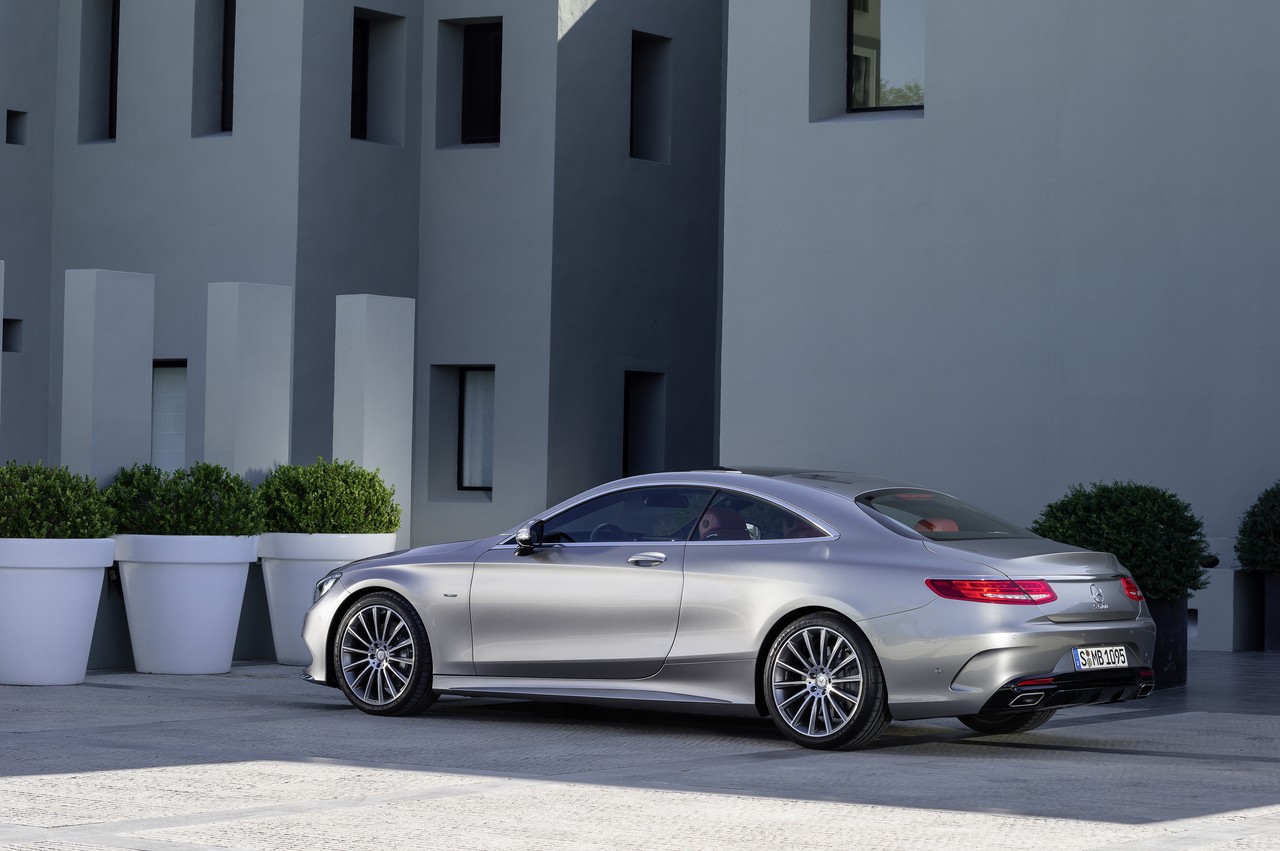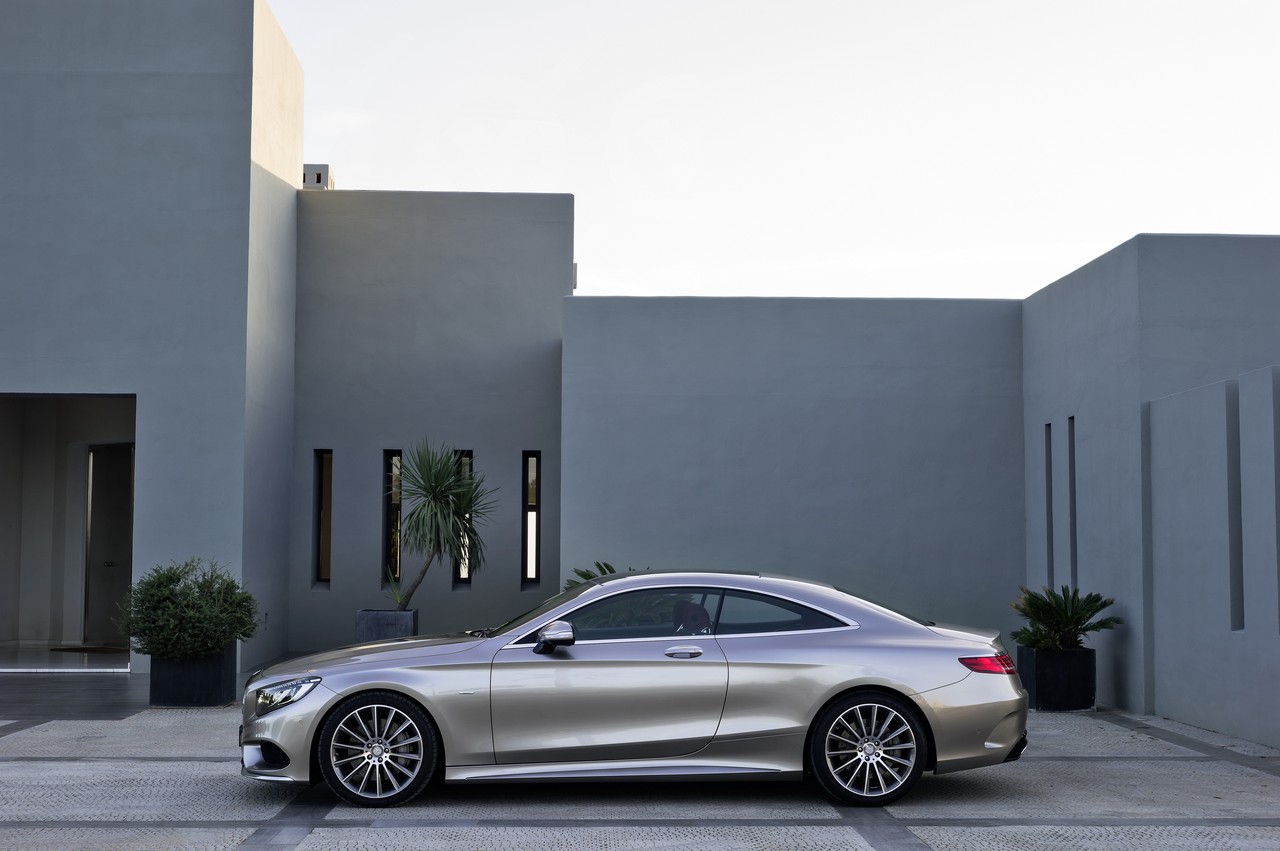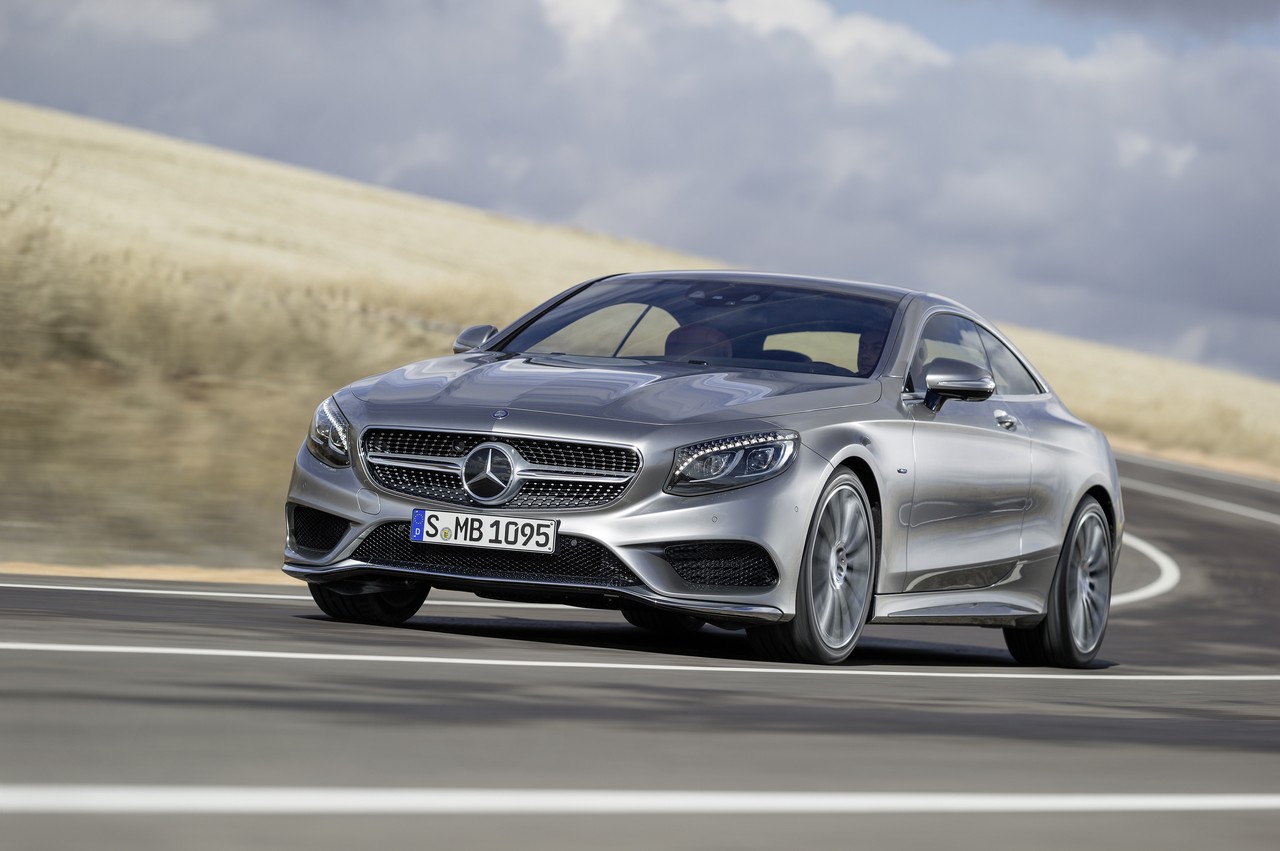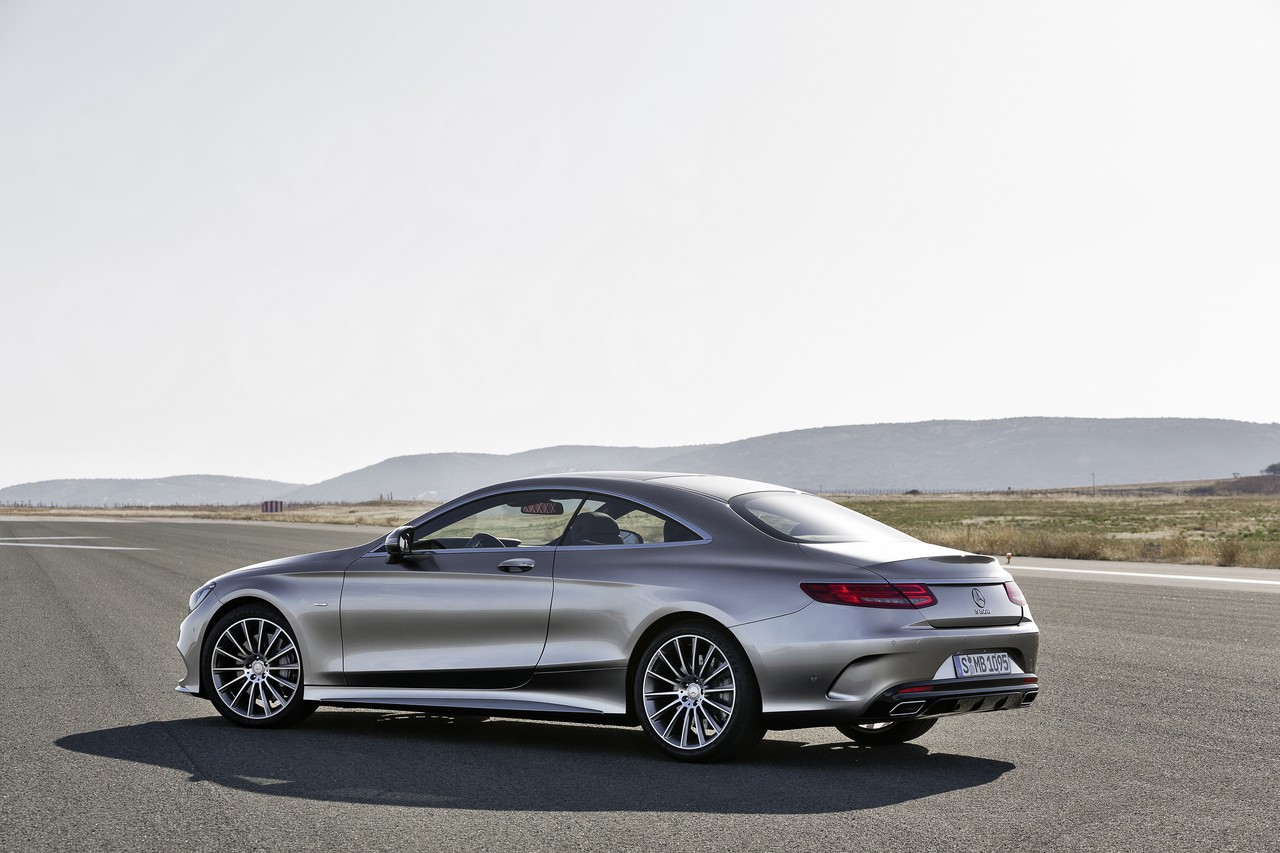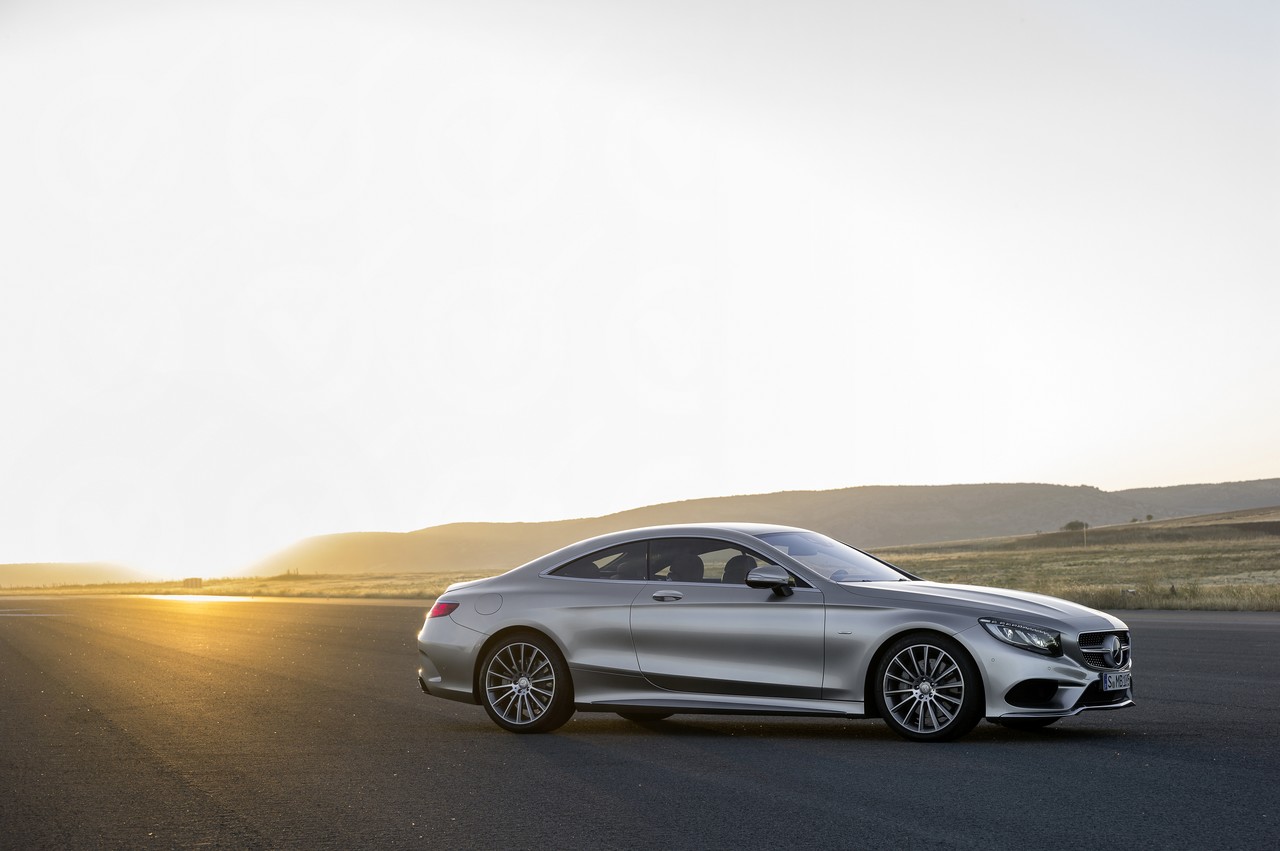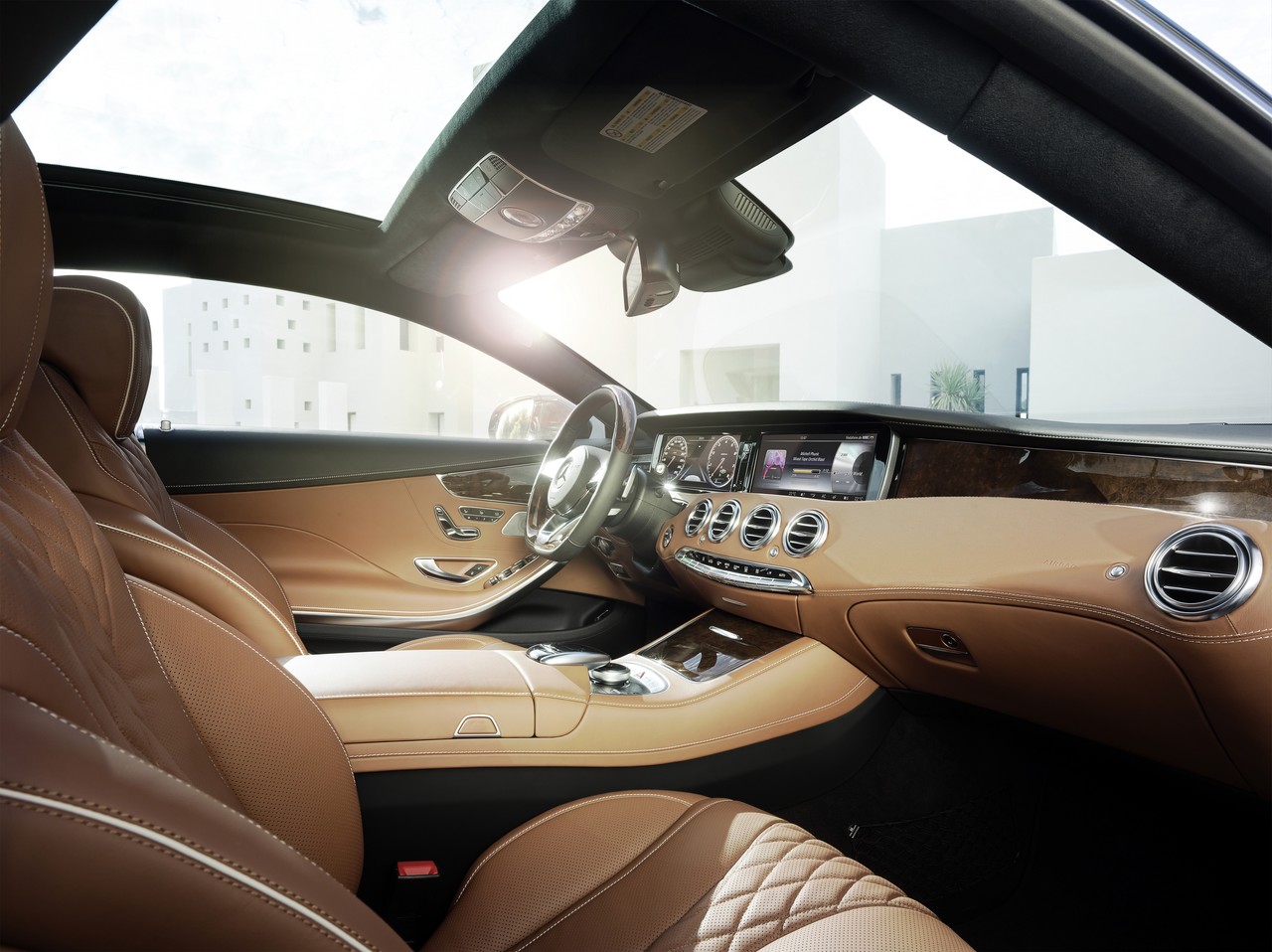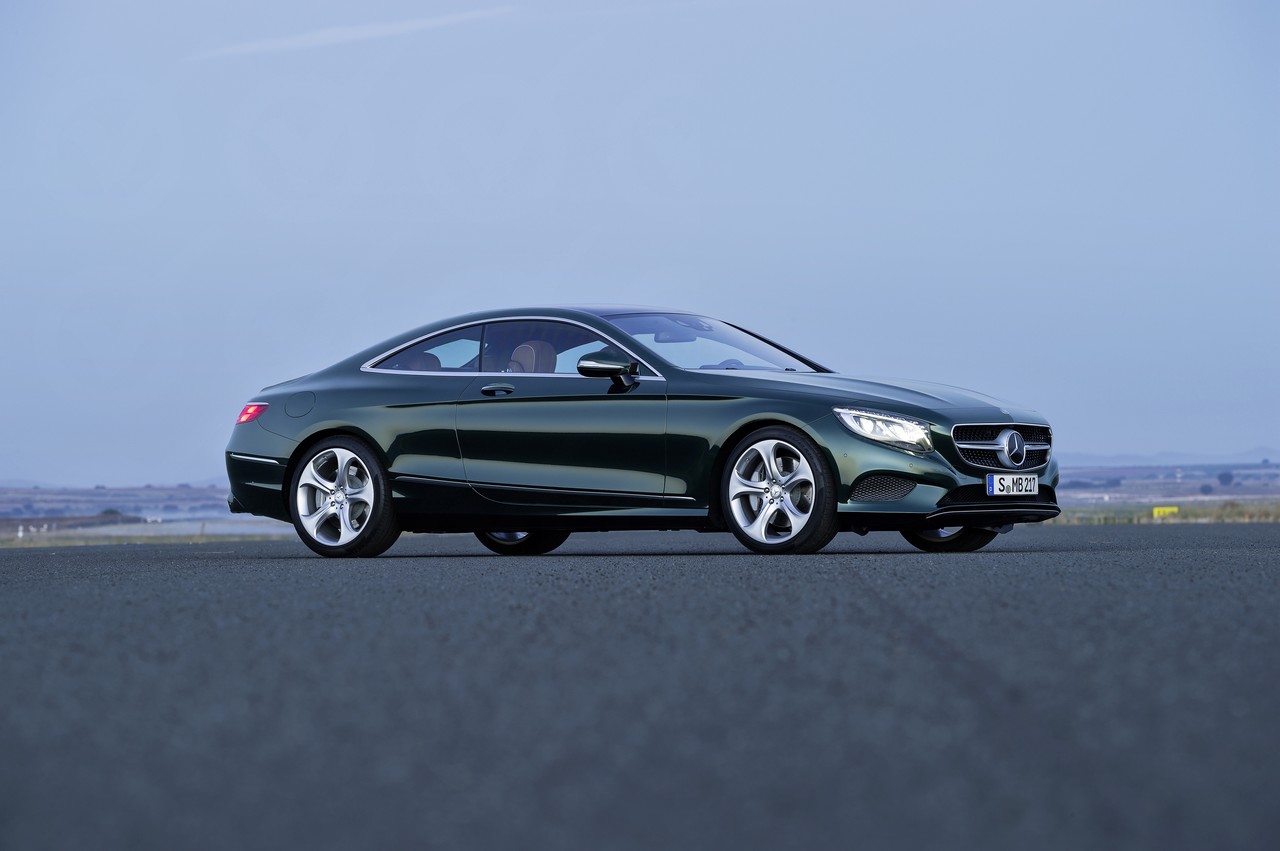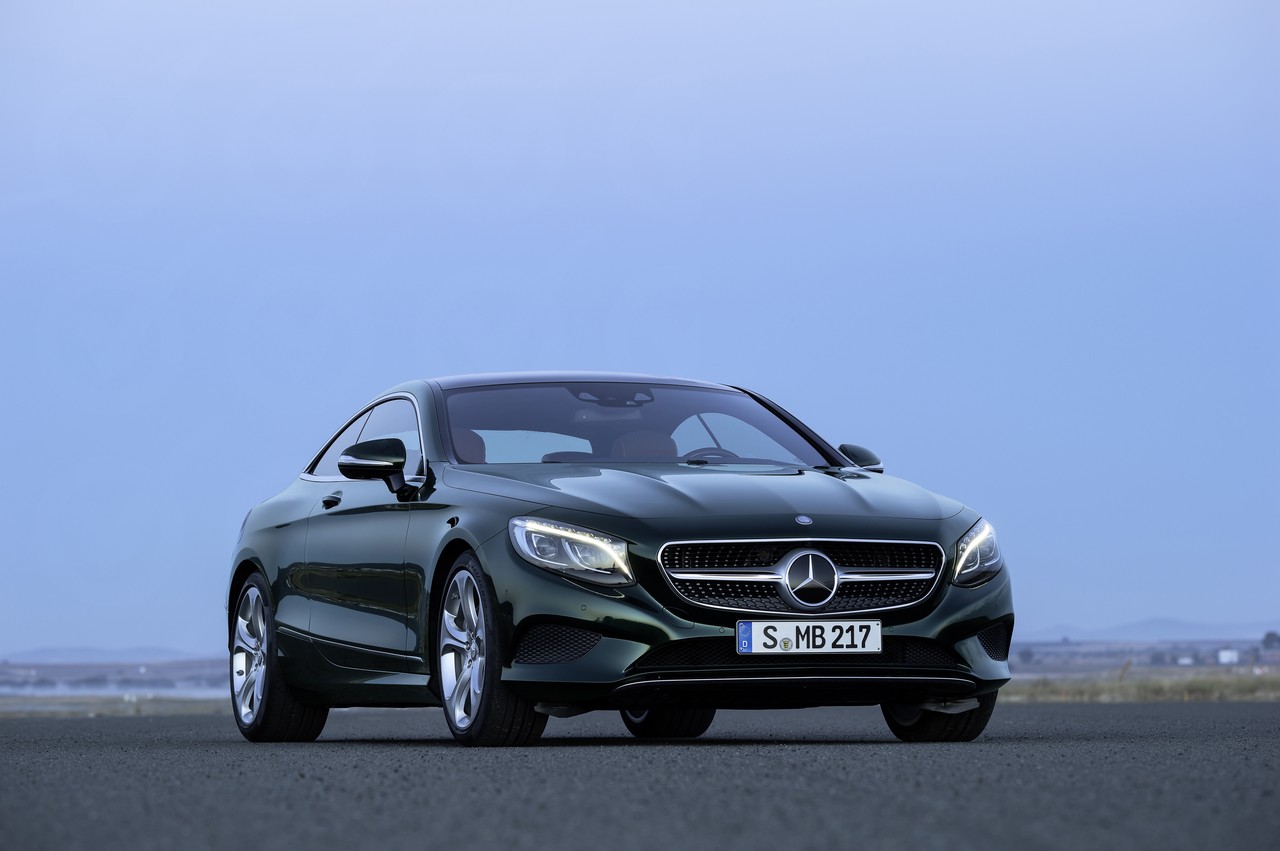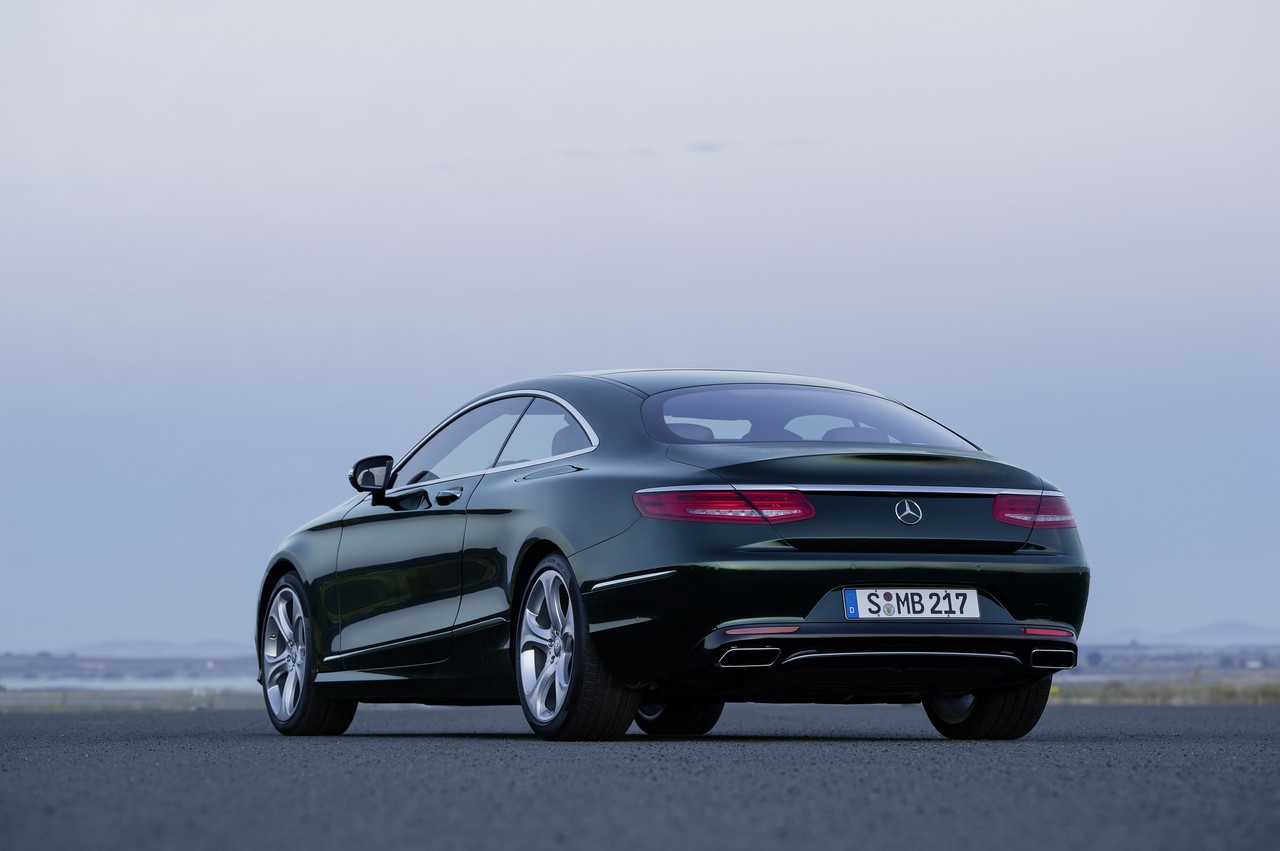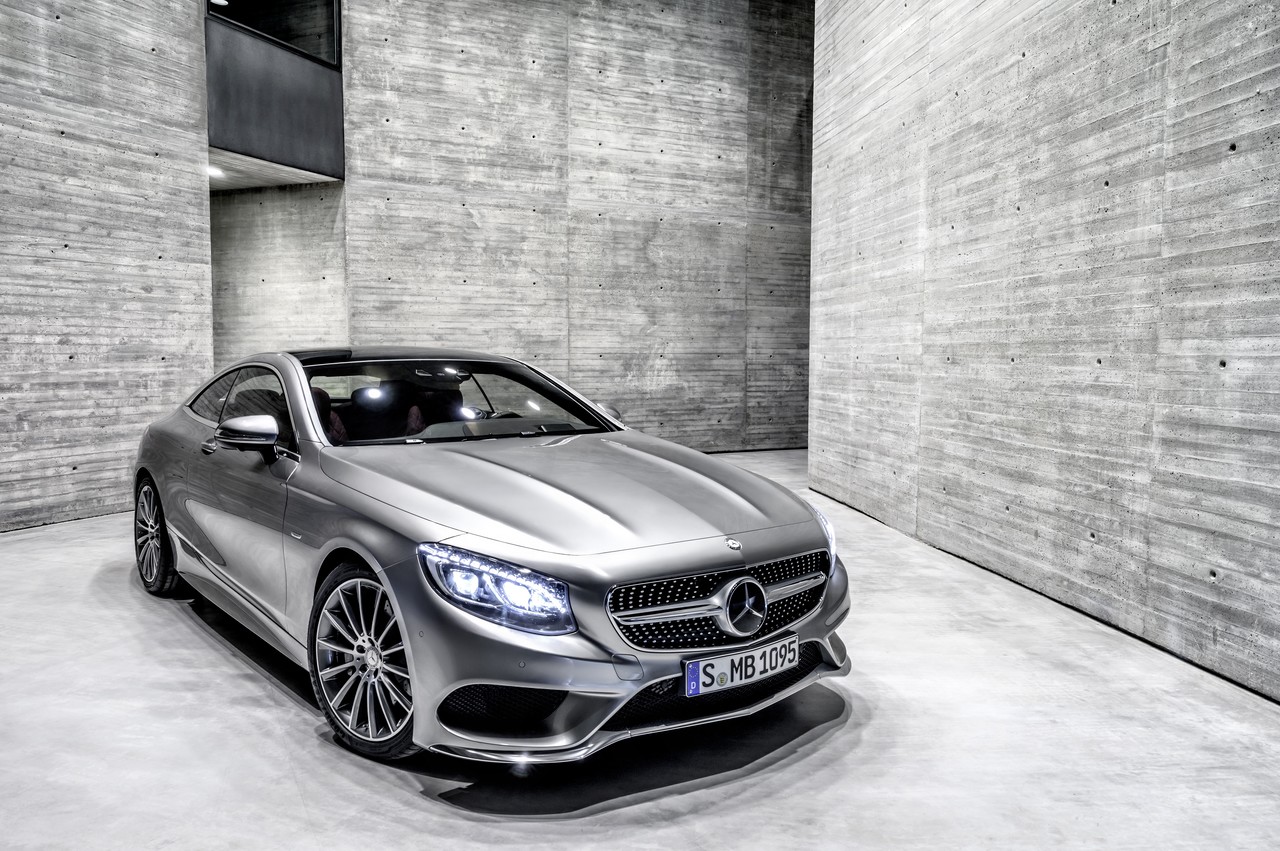
- Refined powertrains
- Nine-speed transmission aids fuel economy
- Excellent ride/handling balance
- Impressively quiet cabin has supremely comfortable seats
- High standard of interior fit and finish
- Steering lacks feedback
- Styling compromises rear seat space
- Limited boot space
- High running, maintenance and depreciation costs
Mercedes-Benz C217 S 500 Coupe (2015-20)
Overview
Released in Australia in June 2015, the Mercedes-Benz C217 S-Class Coupe was a pillarless, four-seat coupe. Manufactured in Sindelfingen, Germany, the rear-wheel drive S-Class Coupe range consisted solely of the S 500 which was powered by a 4.7-litre M278 twin-turbo V8 petrol engine that was mated to a nine-speed automatic transmission. To reduce fuel consumption, the engine had an ‘ECO start/stop’ function which enabled it to shut down when the vehicle was stationary in traffic.
Please note that the Mercedes C217 S 63 AMG and S 65 AMG have been reviewed separately.
| Engine | Trans. | Peak power | Peak torque | |
|---|---|---|---|---|
| S 500 | 4.7-litre twin-turbo petrol V8 (M278 DE46 AL) | 9sp auto | 335 kW at 5250 rpm | 700 Nm at 1800-3500 rpm |
Dimensions
Sharing its platform with the W222 S-Class , the S-Class Coupe had an aluminium hybrid bodyshell. Compared to its C216 CL-Class predecessor, the C217 S-Class Coupe was 38 mm shorter (at 5027 mm), 28 mm wider (1899 mm), 7 mm lower (1411 mm) and had a 10 mm shorter wheelbase (2945 mm); boot capacity was 400 litres. The S 500 Coupe had a drag coefficient of 0.27 Cd.
Suspension, Magic Body Control and curve tilting
The C217 S-Class Coupe had four-link front suspension and multi-link independent rear suspension (both with air springs, monotube shock absorbers and anti-roll bars). As standard, the suspension of the S-Class Coupe included Mercedes-Benz’s Magic Body Control which included Active Body Control and Road Surface Scan functions. The Road Surface Scan used a stereo camera to detect road curvature and undulations up to 15 metres ahead. Using this information, Magic Body Control could prepare the air springs and individually adjustable suspension struts (Active Body Control) accordingly.
In a first for a production car, however, the C217 S-Class Coupe also had a curve tilting function which can operate at speeds between 30 km/h and 180 km/h and enables the vehicle to lean into bends by up to 2.5 degrees (depending on the road angle and vehicle speed) by shifting the base point of each individual strut. For Australia, the curve tilting function was also fitted as standard.
Safety equipment
Standard safety equipment for the Mercedes-Benz C217 S-Class Coupe included dual front airbags, front and rear side airbags, full-length curtain airbags, ABS, brake assist, electronic brake force distribution, electronic stability control, traction control and front seatbelts with pre-tensioners and load limiters. The S-Class Coupe was also fitted with an ‘active bonnet’ that would rise in the event of a pedestrian collision to cushion the pedestrian’s subsequent impact with the bonnet.
In addition to the anticipatory ‘Pre-Safe’ safety measures (such as priming of the brakes in emergency situations, tensioning the seatbelts and closing the windows), Mercedes-Benz’s standard ‘Pre-Safe’ technologies for the C217 S-Class Coupe also included:
- Pre-Safe Brake with pedestrian detection (autonomous emergency braking): using two 24 GHz sensors behind the front bumper which had a range of 30 metres and a 77 GHz radar which had a range of 200 metres, Pre-Safe Brake operated at speeds between 30 km/h and 200 km/h, and at speeds below 70 km/h if the vehicle was approaching a stationary queue of traffic. Around 2.6 seconds before the anticipated moment of impact, an audible warning would sound and a red warning would appear in the tachometer. Around 1.6 before the calculated impact, the first stage of Pre-Safe Brake would initiate partial braking autonomously with around 40 per cent of the maximum braking power (approximately four (4) m/s2); the Pre-Safe occupant protections system would also be activated. If the driver then applied the brakes, maximum braking force would be made available. If the driver failed to react, Pre-Safe Brake would – in its second stage – initiate autonomous emergency braking (i.e. maximum braking power) around 0.6 seconds before the unavoidable collision to reduce the severity of the impact. The pedestrian recognition function enabled Pre-Safe Brake to detect pedestrians when driving at speeds of up to 50 km/h;
- BAS Plus with Cross-Traffic Assist: used a 24 GHz radar sensor with a range of 30 metres and a 77 GHz radar sensor with a range of 200 metres to monitor the distance to the vehicle ahead and would warn the driver if there was a risk of a collision. Brake Assist Plus could detect vehicles when travelling at speeds up to 200 km/h, and stationary objects when the driver was travelling at 7 km/h to 72 km/h. Significantly, Brake Assist Plus could calculate the necessary brake force assistance to prevent a rear-end collision, build up that pressure in the braking system and provide it as soon as the brake pedal was depressed for ‘the best possible deceleration’. The Cross-Traffic Assist function could operate at speeds up to 72 km/h and used the stereo camera and radar sensors to detect traffic that was crossing in front of or behind the vehicle. If detected, the driver would receive visual and audible alerts;
- Pre-Safe Plus: could anticipate rear-end collisions and warn following traffic by flashing the rear hazard warning lights at high frequency; and,
- Pre-Safe Impulse: in the event of a collision, both front occupants would initially be pulled away from the direction of impact by their seat belts prior to the subsequent occupant deceleration (reducing the risk and severity of injuries in a frontal collision).
Further safety equipment – fitted as standard – included:
- Distronic Plus (adaptive cruise control with brake warning): an ‘adaptive’ cruise control system which used two short-range radar sensors positioned behind the front bumper to monitor the road up to 30 metres ahead, and a long-range radar located behind the radiator grille which had a range of 200 metres. Operating at speeds up to 200 km/h, Distronic Plus used an electronic control unit to analyse the information from both radar systems to calculate the engine, automatic transmission and braking parameters required for proximity control. As such, Distronic Plus could automatically apply the brakes to prevent the vehicle from becoming too close to traffic ahead (the time interval could be specified) and accelerate back to the set speed when traffic allowed. To accelerate from rest, the driver only needed to operate the Distronic stalk on the steering column or briefly depress the accelerator pedal. With Distronic Plus, automatic deceleration of up to four (4) m/s2was possible. If Distronic Plus detected that heavier braking was required, a warning light would illuminate in the instrument cluster and be accompanied by an audible warning. Furthermore, the electronic proximity control system could be activated independently of Distronic Plus at speeds over 30 km/h to alert the driver if they were approaching another vehicle too rapidly;
- Steering Assist with Stop&Go Pilot: operating in conjunction with Distronic Plus and at speeds up to 130 km/h, Steering Assist used a stereo camera located behind the windscreen to detect road markings, while the Stop&Go Pilot operated at speeds up to 60 km/h and enabled the system to use the vehicle in front or road markings as a means of orientation. If the vehicle was detected to be drifting out of its lane, Steering Assist would warn the driver and provide steering intervention to keep the vehicle in its lane;
- Active Blind Spot Assist: active at speeds above 60 km/h, a corrective braking force would be applied to the wheels on one side of the vehicle if the driver attempted to change lanes when a vehicle was detected in the driver’s blind spot;
- Active Lane Keeping Assist: would vibrate the steering wheel as the vehicle approached a continuous lane marking line and, if crossed, automatically brake wheels on one side of the vehicle to return the vehicle within the lane;
- Crosswind Assist: could detect sudden, strong gusts of wind and prevent the vehicle from drifting out of its lane via corrective braking forces on one side of the vehicle; and,
- Attention Assist with drowsiness detection: operated at speeds in excess of 80 km/h and assessed driver behaviour (including steering movements) for signs of drowsiness; if detected, the driver would be provided with visual and audible warnings.
Features: Mercedes-Benz C217 S 500 Coupe
Standard features for the Mercedes-Benz C217 S 500 Coupe included 20-inch five-spoke alloy wheels with 245/40 R20 front and 275/35 R20 rear run-flat tyres, 590 watt Burmester surround sound system with thirteen speakers and a nine-channel amplifier, DAB+ digital radio tuner, CD/DVD player and 10GB media register, COMAND Online with a 31.2 cm display, 3D navigation maps, integrated WLAN hotspot, DVB digital TV tuner, auxiliary inputs (two USB ports/SDHC), ‘Linguatronic’ voice recognition, Bluetooth mobile phone connectivity and audio streaming, dual-zone climate control air conditioning (‘Thermotronic’), leather upholstery, power adjustable front seats with ventilation and heating functions, cruise control with speed limiter, LED headlights with adaptive high beams, LED daytime running lights, automatic headlights, rain-sensing wipers, front and rear parking sensors (‘Parktronic’), a 360 degree surround view camera, a leather-wrapped steering wheel with gearshift paddles, remote central locking, proximity key (for keyless entry and ‘keyless go’), power windows, power mirrors with heating and folding functions, a power adjustable steering column, memory settings (for the front seats, mirrors and steering wheel positions), panoramic glass sunroof with powered blind, a powered rear blind, soft-close doors, electrochromatic rear view and door mirrors, a 12 volt power socket, ambient lighting, burr walnut wood trim, floor mats, a trip computer, an alarm and immobiliser.
As standard, the S-Class Coupe was also fitted with:
- Magic Vision Control: directed water onto the windscreen via channels in the windscreen wiper blades to keep the windscreen clean; and,
- Active Parking Assist: could identify suitable parallel parking spaces – when traveling at speeds of up to 36 km/h – and autonomously steer the vehicle as the driver reversed towards the parking space.
Brochure
Specifications
Related links
- Press Kit: Mercedes-Benz C217 S-Class Coupe (June 2013)
- Mercedes-Benz Australia: Mercedes-Benz S-Class Coupe
- Wikipedia.org: Mercedes-Benz C217 S-Class Coupe
